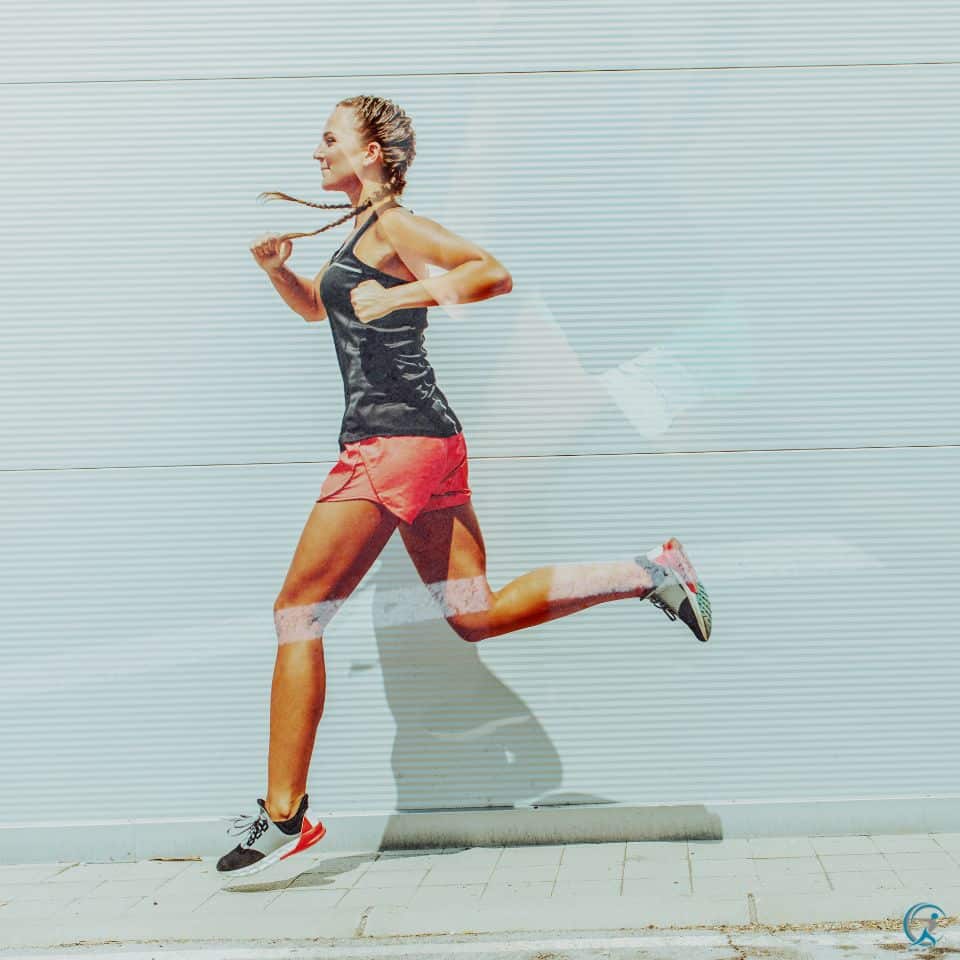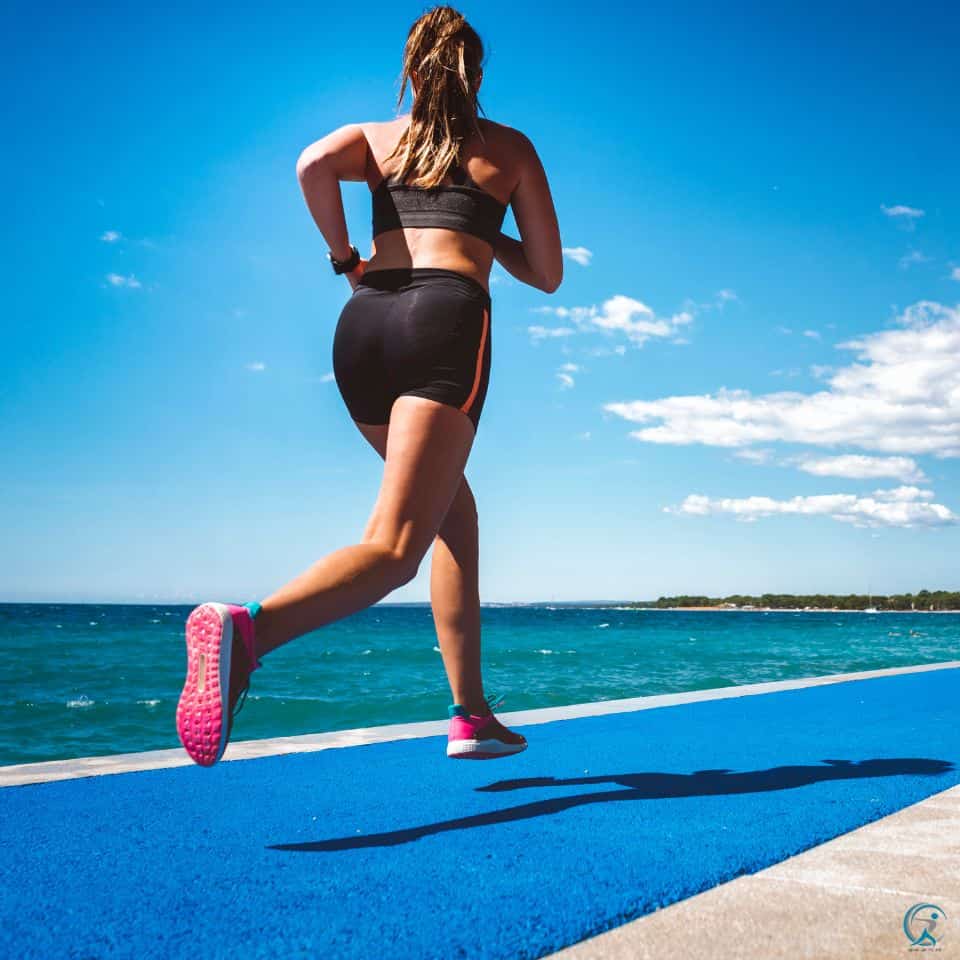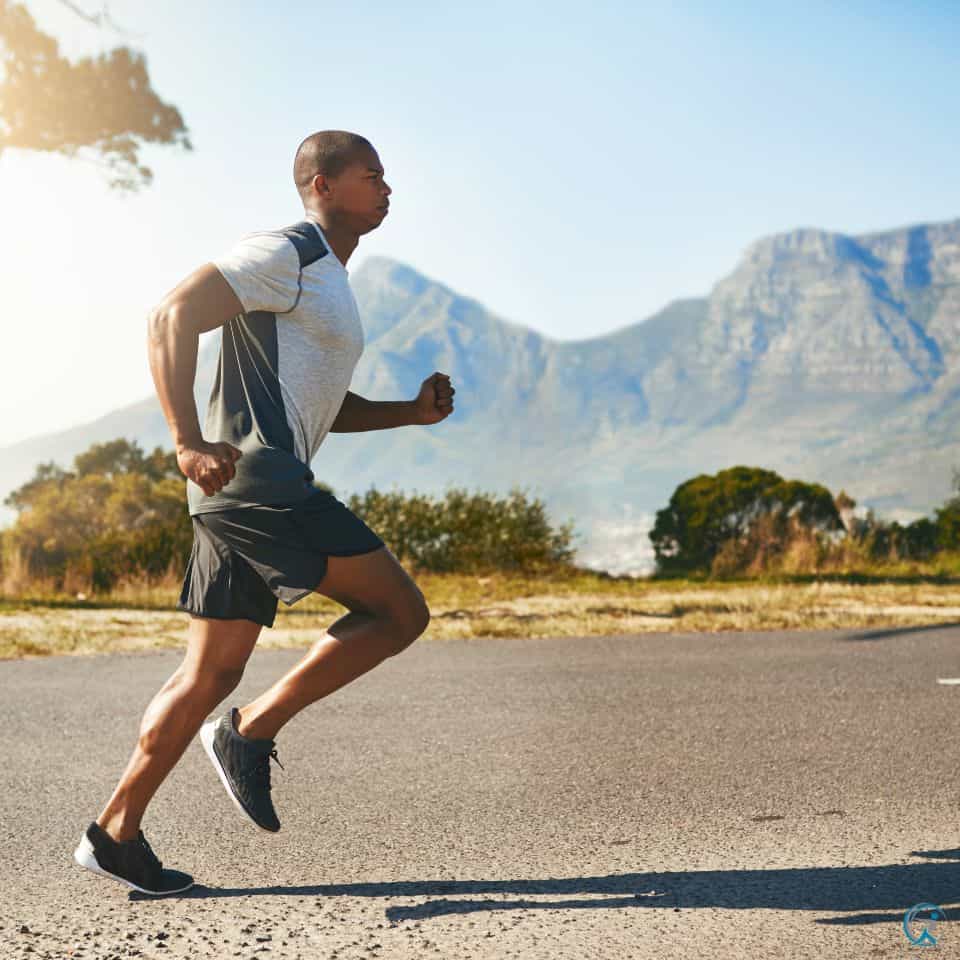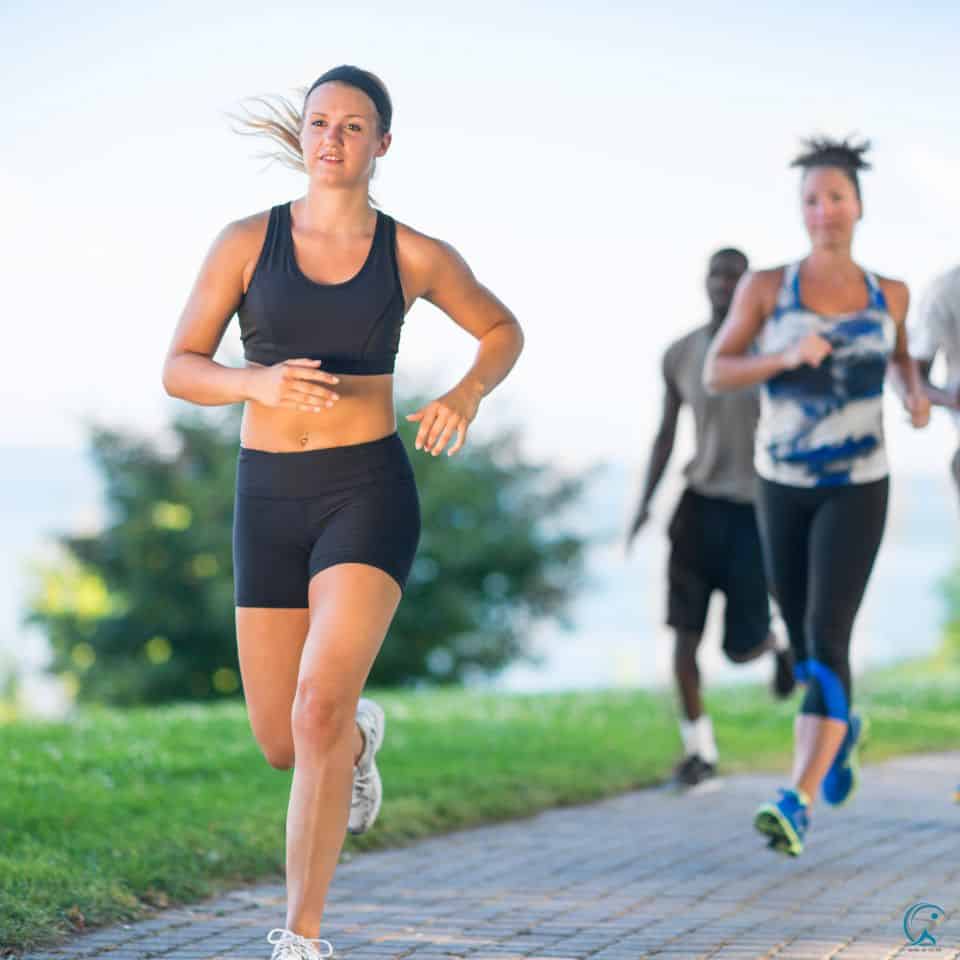Unlock your true running potential by mastering your running cadence for enhanced performance. This vital aspect of running technique helps boost efficiency, endurance, and speed while reducing the risk of injury. Dive into our comprehensive guide to discover tips, benefits, and common pitfalls to avoid on your journey to achieve optimal stride rate and transform your running experience.
The Importance of Running Cadence

Running cadence, or stride rate, refers to the number of steps a runner takes per minute. It is an essential aspect of running technique that can impact performance and reduce the risk of injury.
Mastering your running cadence can improve your efficiency, endurance, and speed. A higher cadence typically means shorter steps and a faster pace, while a slower rhythm means longer and slower.
The ideal cadence varies from person to person depending on factors such as height, stride length, terrain conditions, and weather. However, most professionals suggest about 170-180 steps per minute as an optimal range for runners.
The Importance of Mastering Running Cadence for Better Performance
If you master your cadence, you can improve your overall performance by increasing your efficiency and reducing the risk of injury. A higher cadence means less time spent on the ground with each step which translates to less pressure on joints like the knees or hips. When you have mastered your ideal running cadence, you are more likely to maintain it throughout a race or long-distance run, which will help you conserve energy and prevent fatigue. Furthermore, by improving your form through mastery of running tempo, runners can run faster without overexertion.
Overview of This Article
This article aims to help you understand what running cadence is about and why improving your overall runner performance is vital. It will also provide tips on how to master your ideal range through various techniques, including metronome training, running drills, etc.
In addition, we’ll discuss common mistakes people make when trying to improve their running cadences to avoid them in their training. By the end of this article, you should better understand running cadence and be well-equipped to enhance your cadence for better performance.
Understanding Running Cadence




Definition and Explanation of Running Cadence
Running cadence refers to the number of steps that a runner takes in a minute while running. It is also known as stride rate or step frequency. The typical range of running tempo is from 160 to 200 steps per minute, but this can vary depending on the runner’s height, stride length, and pace.
Factors that Affect Running Cadence
Several factors can affect a runner’s cadence, including height and stride length, terrain and weather conditions, and running shoes and gear.
Height and Stride Length
Taller runners tend to have longer strides than shorter runners do. As a result, they may have a lower cadence because they cover more ground with each step. Similarly, runners with longer legs tend to have longer strides than those with shorter legs.
Terrain and Weather Conditions
The terrain on which you are running can impact your cadence. If you run on hilly terrain or through rough trails, your tempo may be slower due to the increased effort required for each step. The slippery surface may also affect your cadence if you run in adverse weather conditions such as rain or snow.
Running Shoes and Gear
Your choice of footwear can also impact your cadence. Shoes with a higher heel-to-toe drop tend to encourage longer strides, while minimalist footwear promotes quicker turnover. Similarly, carrying extra weight, such as hydration packs or other gear, can slow your cadence.
How to Measure Your Running Cadence
Measuring your cadence is essential in determining whether you are within the ideal range for optimal performance. One way to measure your cadence is by counting your steps for one minute while running comfortably.
Another way is using a foot pod or other wearable technology to provide real-time feedback on your cadence. Understanding running cadence is essential in achieving optimal performance while running.
Factors like height, stride length, terrain and weather conditions, and running shoes and gear can affect your cadence. Measuring your cadence is essential in determining whether you are within the ideal range for optimal performance.
Benefits of Mastering Running Cadence




As a runner, you may already know the benefits of running regularly, such as improved cardiovascular health and increased stamina. However, mastering your cadence can take these benefits to the next level.
By developing a consistent and efficient cadence, you can improve your running efficiency by reducing energy wasted on unnecessary movements. This results in a faster pace and helps reduce fatigue and increase endurance over longer distances.
Reducing the risk of injury is another significant benefit of mastering your running cadence. When you run at an optimal cadence, there is less stress on your joints and muscles as your body is in alignment with each stride.
As a result, you are less prone to joint injuries such as shin splints, knee pain, or IT band syndrome. Increased endurance is yet another benefit that comes with mastering your running cadence.
With an efficient stride pattern in place, each step becomes more effortless, thus reducing the amount of energy expended while allowing for increased oxygen uptake and utilization. This translates to covering longer distances while maintaining a good pace throughout easily.
Increased speed
It’s no secret that one crucial factor that runners consider when training is speed. The ability to run faster helps improve performance and provides runners with greater confidence and motivation when participating in races or marathons.
Mastering your running cadence is one way of achieving this goal – by increasing the number of steps taken per minute while keeping the momentum up during each stride. With an increased stride turnover rate due to mastery of running cadences, runners can achieve quicker times, ultimately improving their overall race performance, whether at shorter distances like 5K or longer ones like half-marathons or full marathons.
Improved form and technique
Poor form can lead to inefficient movement and wasted energy, negatively impacting your running performance. Achieving optimal running tempo helps improve the form and technique of runners by encouraging proper alignment of the body during each stride.
With proper alignment, the risk of injury decreases, as well as stress on muscles and joints. Additionally, mastering your running cadence can assist in identifying any areas of weakness in your running form, allowing you to make adjustments before it becomes a significant issue.
This can help prevent injuries while also improving overall efficiency and speed. Mastering your running cadence is an essential aspect of a runner’s training that should not be overlooked.
Whether you’re an experienced runner or just starting, developing this skill can lead to many benefits ranging from improved endurance and speed to reduced risk of injury and improved form. So take time to work on perfecting your stride pattern today!
Techniques for Mastering Your Running Cadence




How to Increase Your Cadence
Metronome training is one of the most effective ways to increase your running cadence. This involves using a device or app that emits a consistent beep or tone at a fixed tempo, which you then match your foot strikes to as you run.
To start, set the device to beep at 170-180 beats per minute (bpm), which research suggests is the optimal range for most runners. Begin by matching one-foot strike per beat and gradually increase up to two-foot strikes per beat or even three with practice.
Another technique for increasing cadence is running drills, such as high knees and butt kicks. These drills can help improve your running form while training your body to move more quickly and efficiently.
Start by doing these drills for short bursts during warm-ups or cool-downs, gradually increasing their duration. Visualization techniques can also help improve cadence.
Imagine yourself floating lightly over the ground like an elite runner with quick, nimble steps. Focusing on this visualization during runs can help train your body to move faster and more efficiently.
How to Maintain Your Ideal Running Cadence
Once you’ve mastered an ideal running cadence, it’s essential to maintain it throughout your runs. One way to do this is through breathing techniques, such as counting your breaths in sync with your foot strikes. For example, inhale for two steps and exhale for two steps at a steady pace that matches your desired cadence.
Pacing strategies are also crucial in maintaining an ideal cadence. Avoid starting too fast or too slow; aim for a steady pace that matches your desired cadence from the start of the run until the end.
Use mile markers or landmarks along the way as cues to check your cadence and adjust as needed. Another helpful tip is to focus on how your body feels while running.
If you start to feel heavy or sluggish, it may be a sign that your cadence has dropped below its ideal range. In these instances, take a deep breath and focus on quickening your steps to return to the rhythm.
Check out: Garmin Forerunner 55 Review
The Relationship Between Cycling and Running Cadence




Cycling Cadence and Its Relationship to Running Cadence
Cycling cadence, the number of pedal revolutions per minute, shares similarities with running cadence regarding efficiency and technique. Both disciplines benefit from a higher tempo, leading to increased performance and reduced fatigue.
Elite runners and cyclists often focus on maintaining a steady stride rate or pedal stroke rate to achieve optimal results. Understanding the connection between cycling and running cadence can help athletes improve their overall form, as many principles apply to each. For example, incorporating drills and strength training exercises can significantly enhance an athlete’s ability to maintain a consistent pace and avoid injury.
Check out: Best Sports Watches for Interval Training
The Science Behind Running Economy and Cadence
Running economy refers to the amount of oxygen a runner consumes at a specific running pace. It is a crucial factor in determining performance, especially for distance runners. A higher running cadence, or step rate, contributes to a better running economy by promoting a shorter, quicker stride that reduces ground contact time and energy expenditure. By targeting a cadence of around 180 bpm, recreational runners can improve their running economy and performance. Elite athletes often work closely with coaches to fine-tune their running technique, focusing on stride frequency and proper running form to achieve the best results.
Strength Training and Its Impact on Running Cadence
Incorporating strength training into a runner’s routine can profoundly affect their ability to maintain a faster cadence over longer periods. By focusing on exercises that target specific muscle groups, such as the glutes, hamstrings, and core, runners can develop the power and stability necessary to maintain a long stride without sacrificing form.
As a result, runners can increase their running pace and mile pace while minimizing the risk of injury. Strength training also benefits elite athletes, who often engage in targeted workouts to support their optimal cadence and running technique. To learn more about how strength training can enhance your running cadence, consider consulting with a coach or personal trainer specializing in distance running.
Check out: Adidas Running Shoes for Men
Common Mistakes to Avoid When Mastering Your Running Cadence
Overshooting the Ideal Range: Don’t Sacrifice Quality for Quantity
One of the most common mistakes runners make when working on their cadence is overshooting their ideal range. Increasing your cadence can lead to better running performance, but it’s essential to do so gradually and within a healthy range. Generally, a cadence of 180 steps per minute is often recommended as an ideal cadence for most runners.
However, that number isn’t set in stone and can vary depending on height, stride length, and running speed. Increasing your cadence too quickly or significantly above your natural range can be counterproductive.
Overshooting your ideal range often results in sacrificing proper form and technique for speed, which can lead to injury over time. Focusing on gradually increasing your cadence within a healthy range that works best for you is essential.
Not Giving Yourself Enough Time: Patience Pays Off
Another common mistake when working on running cadence is not giving yourself enough time. Improving your running performance takes patience and consistent effort over time.
It’s important to understand that seeing significant improvements in your cadence may not happen overnight. Instead of trying to rush the process or getting frustrated with slow progress, take small steps each day toward improving your form and technique.
Focus on incorporating drills into your regular training routine that helps build muscle memory for efficient movement patterns. Gradually increase speed while maintaining proper form rather than pushing yourself too hard too soon.
Check out: Best Smartwatches for Runners
Conclusion




Mastering your running cadence is an essential component of improving overall running performance. By understanding the factors that affect running cadence and implementing techniques such as metronome training and visualization strategies, you can gradually increase efficiency and reduce the risk of injury.
However, avoiding common mistakes such as overshooting your ideal range or not giving yourself enough time to see progress is essential. By taking a patient and consistent approach, you can achieve long-term success in improving your running cadence and overall performance.
References
4 interval training sessions to help you hit any race goal
3 Running Workouts to Guarantee Race Success
https://www.trainingpeaks.com/blog/three-workouts-for-runners-to-guarantee-race-success/
Interval Training for Runners: Why, How & Techniques to …
https://www.all-about-marathon-training.com/interval-training.html
How to Stick to Your Goal Pace During Intervals
https://www.runnersworld.com/training/a38786710/interval-run-pace/
Goal-Paced Running, Intervals, Sprints, and Timed …
What is cadence in running? | Live Science
In a 2014 Journal of Sports Science study, runners increased their cadence by 10%, finding that it subsequently decreased their stride length.
Step it up: Does running cadence matter? Not as much as previously …
Burns says longer steps take more energy, and his study found that cadence naturally increased four to five steps per minute per mile as runners ran faster.
It’s Time to Rethink the Ideal Running Cadence – Outside Online
On the surface, the findings from a new study—among the first to harvest biomechanical data from top runners during the heat of real-world competition using wearable technology—seem to support… …
Step frequency patterns of elite ultramarathon runners during a 100-km …
The current findings are important for runners, clinicians, and coaches as they seek to monitor or manipulate SF.
Running Cadence: What It Is, Why It Matters, and How To Improve It
A study of 20 runners at the 100K World Championships found that their average cadence was 182 steps/minute.
Alex is a fitness aficionado, empowers others towards healthier, active lives through small, sustainable changes for lasting results. Visit Gearuptofit.com for insightful tips and resources to enrich a balanced lifestyle.
